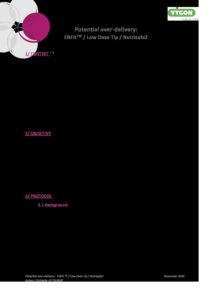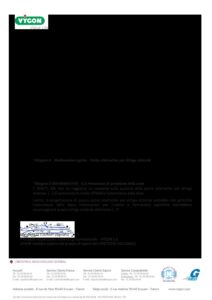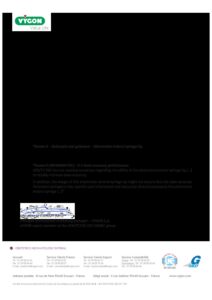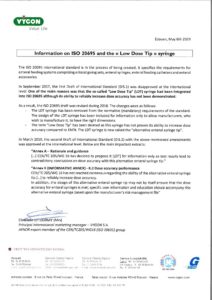De komst van ENFitTM heeft ervoor gezorgd dat er bezorgdheid ontstond over het mogelijke risico op overdosering bij het onnauwkeurig toedienen van medicatie. Deze bezorgdheid stelt zich voornamelijk bij subpopulaties met een hoog risico (bijv. neonatale patiënten) indien gebruik wordt gemaakt van een omgekeerd verbindingssysteem (vrouwelijk naar mannelijk). Deze opstelling kan leiden tot onbedoelde verplaatsing van de vloeistof die zich oorspronkelijk in de vrouwelijke aansluiting van de spuit bevond.
Report_Over-delivery_ENFit_LDT_NS2_2020 FR
Avec ENFit, des inquiétudes ont été soulevées quant aux risques possibles de délivrer des doses inexactes de médicaments dans certaines pratiques cliniques à travers des sous-populations à haut risque (par exemple les patients néonatals) si l’on utilise un système de connexion inversée (femelle vers mâle). Cette orientation peut introduire un déplacement accidentel du fluide contenu à l’origine dans le connecteur femelle de la seringue. L’objectif de ce rapport est de déterminer le volume contenu dans le connecteur de la seringue (femelle) qui pourrait être déplacé involontairement vers la sonde d’alimentation (mâle) pendant la connexion, ce qui signifie une éventuelle surdose.
Report_Over-delivery_ENFit_LDT_NS2_2020 DE
Im Zusammenhang mit ENFitTM wurden jedoch Bedenken hinsichtlich der möglichen Risiken der Verabreichung ungenauer Medikamentendosen in bestimmten klinischen Praktiken bei Hochrisiko-Subpopulationen (z. B. Neugeborenen) geäußert, wenn ein umgekehrtes Verbindungssystem (weiblich zu männlich) verwendet wird. Diese Ausrichtung kann zu einer unbeabsichtigten Verdrängung von Flüssigkeit führen, die ursprünglich im weiblichen Spritzenkonnektor enthalten war.
Ziel dieses Berichts ist es, das im Konnektor der Spritze (weiblich) enthaltene Volumen zu bestimmen, das während der Konnektion unbeabsichtigt in die Ernährungssonde (männlich) verschoben werden könnte, was eine potenzielle Überdosierung bedeutet.
Report_Over-delivery_ENFit_LDT_NS2_2020 ES
El dispositivo de conexión ENFitTM, establecido en la norma ISO, plantea preocupaciones sobre el riesgo de administrar dosis inexactas de medicamentos en determinadas prácticas clínicas en subpoblaciones de alto riesgo (por ejemplo, pacientes neonatales) si se utiliza un sistema de conexión inversa (hembra a macho). Esta orientación puede dar lugar a un desplazamiento inadvertido del líquido que originalmente estaba contenido en el conector hembra de la jeringa.
El objetivo de este informe es determinar el volumen contenido en el conector de la jeringa (hembra) que podría desplazarse involuntariamente la sonda de alimentación (macho) durante la conexión ( on el posible riesgo de sobredosis en la administración).
Report_Over-delivery_ENFit_LDT_NS2_2020
With ENFit, concerns have been raised about the possible risks of delivering inaccurate doses of medicines in certain clinical practices across high risk subpopulations (e.g. neonatal patients) if using a reversed connection system (female to male). This orientation can introduce inadvertent displacement of fluid originally contained within the female syringe connector.
The objective of this report are to determinate the volume contained in the syringe’s connector (female) that could be displaced unintentionally to the feeding tube (male) during the connection, which means a potential over delivery.
Three connectors are investigated:
– ENFit (compliant with ISO 80369-3:2016)
– Low Dose Tip connector (compliant with ISO 20695:2020)
– Nutrisafe2
ISO 20695 and Low Dose Tip syringe_2020.07_DE
Die ISO 20695 wurde im März 2020 veröffentlicht. Einer der Hauptgründe war die sogenannte „Low Dose Tip“ (LDT) Spritze, welche in die ISO 20695 integriert werden sollte, obwohl nicht nachgewiesen werden konnte, dass dieses Spritzendesign die Dosiergenauigkeit erhöht. Infolgedessen wurde die ISO 20695 wie folgt überarbeite.
Information on ISO 20695 and Low Dose Tip syringe_IT_2020.07
Lo standard ISO 20695 è stato pubblicato nel marzo 2020. Specifica i requisiti per i sistemi di alimentazione enterale, che comprendono set per alimentazione, siringhe, cateteri e accessori per l’alimentazione enterale.
Nel settembre 2017, la prima bozza della ISO 20695 è stata disapprovata a livello internazionale. Uno dei motivi principali è il fatto che che la cosiddetta siringa “Low Dose Tip” (LDT) è stata integrata nella ISO 20695, sebbene non sia stata dimostrata la sua capacità di aumentare in modo affidabile la precisione del dosaggio. Di conseguenza la ISO 20695 è stata rivista.
ISO 20695 and Low Dose Tip _2020.07
ISO 20695 removes the Low Dose Tip (LDT) design from the normative requirements
BD.CustomerLetter_2015.10
Becton Dickinson (BD) is concerned about the ENFit ISO 80369-3 design and communicates on the potential inaccurate dosing.
Information on ISO 20695 and Low Dose Tip syringe
ISO 20695 information letter









